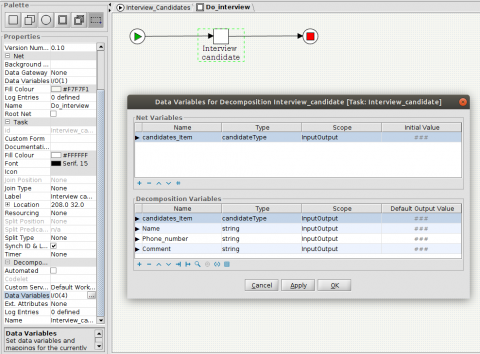In YAWL extended attributes cannot be applied directly to single elements of complex types. Let us assume that we want to display the "Comment" element of the "candidateType" as a text area.
<xs:schema xmlns:xs="http://www.w3.org/2001/XMLSchema">
<xs:complexType name="candidateType">
<xs:sequence>
<xs:element name="Name" type="xs:string" />
<xs:element name="Phone_number" type="xs:string" />
<xs:element name="Comment" type="xs:string" />
</xs:sequence>
</xs:complexType>
<xs:complexType name="candidatesType">
<xs:sequence>
<xs:element name="Candidate" type="candidateType" minOccurs="1" maxOccurs="unbounded" />
</xs:sequence>
</xs:complexType>
</xs:schema>
We will demonstrate a way to solve the problem in task "Interview_candidate" of the as in the next screenshot:

The input mapping of task variable "Name" is
/Do_interview/candidates_Item/Name/text()
Variables "Phone_number" and "Comment" are treated in a similar fashion. The output mapping of task variable "candidates_item" is
<Name>{/Interview_candidate/Name/text()}</Name>
<Phone_number>{/Interview_candidate/Phone_number/text()}</Phone_number>
<Comment>{/Interview_candidate/Comment/text()}</Comment>
Task variable "candidates_item" is hidden using an extended attribute. Task variable "Comment" has an extended attribute "Text area". The specification is attached.

Works!
This solved my problem. Thanks a lot for the detailed tutorial!